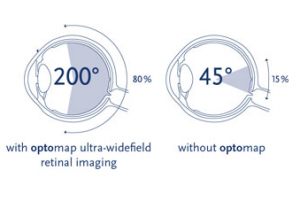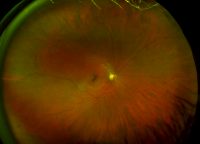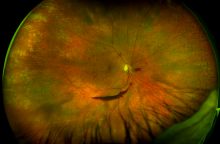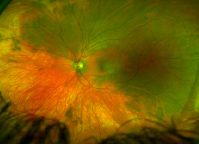Your retina (located in the back of your eye) is the only place in the body where blood vessels can be seen directly. This means that in addition to eye conditions, signs of other diseases (for example, stroke, heart disease, hypertension and diabetes) can also be seen in the retina.
Early signs of these conditions can show on your retina long before you notice any changes to your vision or feel pain. While eye exams generally include a look at the front of the eye to evaluate health and prescription changes, a thorough screening of the retina is critical to verify that your eye is healthy.
Examining the retina is challenging. Your eye doctor looks through your pupil to examine a layer of tissue that covers the back and inside walls of your eye. Traditional viewing methods can be effective, but difficult to perform. They are also carried out manually without any digital record.
Optomap imaging enhances your eye doctor’s ability to detect even the earliest sign of disease that presents in your retina.
This imaging system captures more than 80% of your retina (compared to traditional methods which reveal only 10-12% of your retina at one time), possibly eliminating dilation, which means no more blurry vision, light sensitivity or uncomfortable eye drops. This image also becomes a permanent part of your medical file, enabling your doctor to make important comparisons from year to year.

Why is a retinal exam so important?
Some of the first signs of diseases such as stroke, diabetes and even some cancers can be seen in your retina, often before you have other symptoms. An Optomap makes it easier to see them.
What is an Optomap?
The Optomap is a panoramic digital image of the retina produced by Optos scanning laser technology. It is the only technology that can show a wide 82% view of your retina at one time.
How will Optomap benefit me?
The ultra-widefield Optomap may help your eye doctor detect problems more quickly and easily. Unlike traditional retinal exams, the Optomap image can be saved for future comparisons.
Does it hurt?
No. It is completely comfortable and the scan takes less than a second.
Is an Optomap safe for children?
Yes. In fact, many vision problems begin in early childhood, so it’s important for children to receive quality routine eye care.




